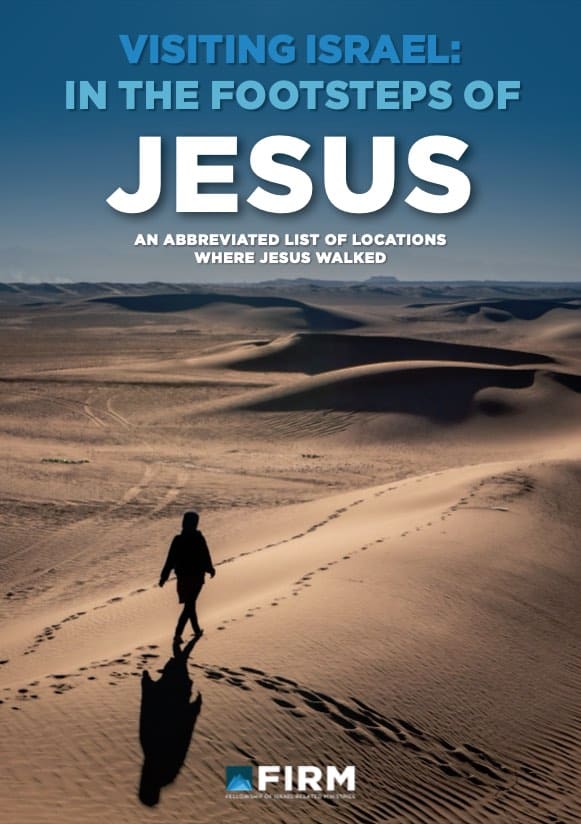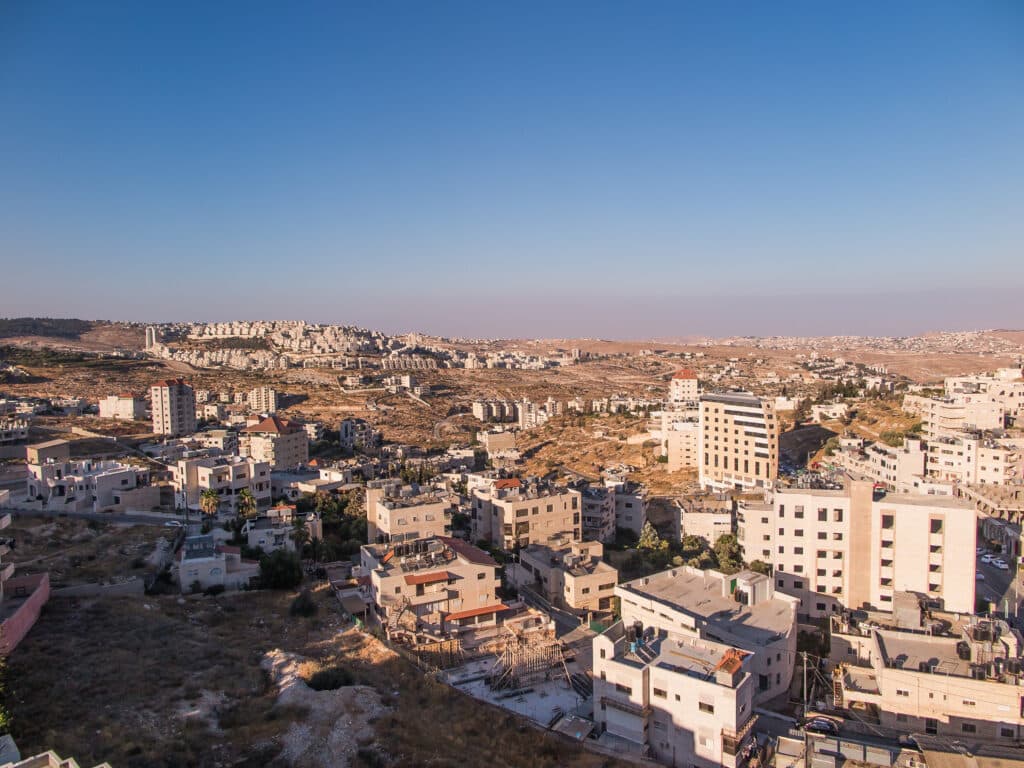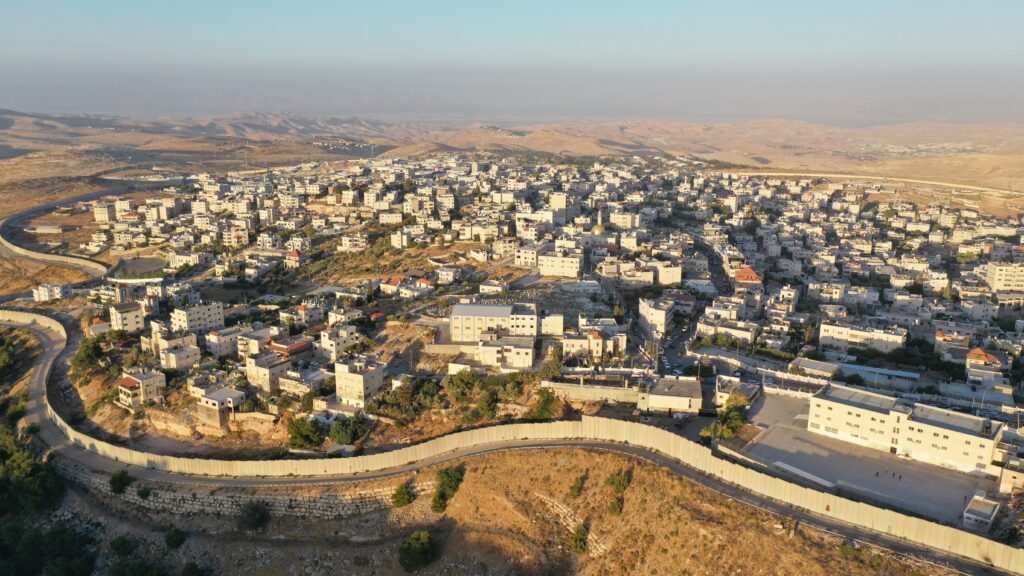The West Bank in the Bible
When the media talk about Israel, perhaps you’ve heard of the West Bank. Many think of it as one of the “disputed territories”. But did you know that this region appears in the Bible frequently, just under different names?
In fact, it wasn’t until the 20th century that the term “West Bank” appeared. For centuries, people knew the land west of the Jordan river (thus the term, the West Bank) as Judea and Samaria. Sound familiar?
While the term West Bank is relatively recent, the names Judea and Samaria have deep historic roots and their location corresponds to the ancient kingdoms of Israel and Judah.
So, what was (and is) so significant about these locations? We would love to tell you!
When was this Land called Judea and Samaria?
The land of the West Bank once formed the heart of ancient Israel, where many significant biblical events took place. Here is a brief, super condensed history of the Holy Land:
The Jewish People entered the Promised Land after exodus from Egypt somewhere between 1400-1200 BCE. After a period of the Judges, the Kingdom of Israel came to be. It was ruled first by Saul and then, by the beloved King David. Who then passed on the throne to his son Solomon.
Sadly, Israel was divided into two kingdoms around 930 BCE, after the death of King Solomon. There were then the southern kingdom of Judah and the northern kingdom of Israel. Geographically, the land they were on was commonly referred to as Judea and Samaria respectively.
Judea in the Times of the Bible
The province of Judea is distinguished from Galilee and Samaria. It included the territories of the tribes of Judah, Benjamin, Dan, Simeon, and part of Ephraim.
Gibeon, located in Samaria, is where Joshua commanded the sun and moon to stop during a key battle (Joshua 10:12). At another time, the Gibeonites also tricked Joshua into making a treaty with them.
In the area of the Judean wilderness, David was hiding from King Saul, beseeching and praising God, as penned in the Psalms.
A big community in Judea centered around Hebron, south of Jerusalem. Abraham rests there, along with his wife Sarah, son Isaac, daughter-in-law Rebekah, grandson Jacob and granddaughter-in-law Leah. Years later, God instructed King David to go to Hebron.
But what is even more important, Old Testament prophecy declares that the Messiah would come from a small town within Judah, called Bethlehem.
“As for you, Bethlehem of Ephrathah, even though you remain least among the clans of Judah, nevertheless, the one who rules in Israel for me will emerge from you. His existence has been from antiquity, even from eternity.” (Micah 5:2)
Check out other FIRM articles for a more in-depth look at the ancient capital city of Hebron and at Bethlehem and its significance.
The Long and Complex History of Samaria
Samaria was the place where Abram built an altar, after God promised him the land of the Canaanites (Genesis 12:6-8). Later, when the Israelites divided the land into the northern and southern kingdoms, the area of Samaria was taken by Israel.
But Samaria may sound familiar to Christians especially because of how often the Gospels mention its residents. Samaritans were frequent characters in the stories and parables of Jesus.
Several hundred Samaritans still live in Israel and continue to practice their faith centered on the Pentateuch and Mount Gerizim.
But although in the days of Yeshua’s life on earth the Jewish people held Samaritans in contempt, Samaria hosted the Tabernacle for years in the past. Shiloh and Bethel are just some of the Samaritan locations where the Ark of the Covenant stood, hosting the presence of God.
West Bank in the Bible: Shiloh
With the exception of Jerusalem, there is no place more significant in ancient Israel’s history than Shiloh. The town was located in the tribal territory of Ephraim. It is first mentioned in the Book of Joshua, when the Israelites conquer the land of Canaan and divide it among the twelve tribes.
The location of Shiloh is virtually undisputed, matching the description found in the Torah almost perfectly. Its importance is also undeniable – the Torah mentions it over 30 times, as it was the initial capital of Israel and hosted the Tabernacle.
But most importantly, God said His name dwelled there first:
“Go now to my place that was in Shiloh, where I made my name dwell at first…” Jeremiah 7:12
The place became a symbol of redemption. In Shiloh, Hannah prayed for a child and God heard her prayer, giving her Samuel. This is where Samuel eventually became a judge and a leader of the Israelites.
Jewish spiritual life was centered in Shiloh for many years until the death of the High Priest, Eli. The Israelites removed the Ark from Shiloh, as they thought it would help them in battle. Consequently, the Ark was stolen by Israel’s enemy, the Philistines.
West Bank in the Bible: Bethel
Bethel, or rather Beit-El which means House of God, similarly to Shiloh, is also located in the West Bank and hosted the Ark of the Covenant. But located further to the south, it’s already in the tribal territory of Benjamin.
Here, Abram (before he became Abraham) pitched his tent, as instructed by God. Many years later, his grandson Jacob stayed here and had a memorable dream. He saw a ladder leading to heaven, with angels walking up and down, with God standing at the very top.
It was at Bethel that God promised Jacob the land of Canaan. There, Jacob struggled with the Angel of the Lord, who struck in his hip, causing Jacob to limp from that day on. And finally, at Bethel God changed Jacob’s name to Israel:
“Your name shall no longer be called Jacob, but Israel; for you have struggled with God and with men, and have prevailed.” Genesis 32:28
Visiting the Biblical Sites in the West Bank
In Biblical times, the Jewish people resided all over the lands west of the Jordan. From Shiloh in Samaria to Hebron in Judea (and everywhere in between) this was the central region to their communal and religious life.
In the modern era, both Shiloh and Bethel have become somewhat neglected, maybe even forgotten by some. The journey described in Jesus’ parable about the Good Samaritan was considered dangerous at the time, and in many ways it has remained that way until today.
Despite their obscurity in the modern world, however, the significance of Shiloh and Bethel in the Bible, thus also today, cannot be denied. Both were central to the worship and prayer life of Israel. They are a reminder of the rich history and traditions of the Jewish people.
Today, these Biblical sites are past the Green Line, which means some restrictions to travel apply. But they are well worth a visit, as many of them are designated archeological sites and tourist destinations.
God has sown into this land a rich spiritual legacy and every generation is invited to rediscover it in their lifetime.

Visiting Israel: In the Footsteps of Jesus: Free PDF Download
It is quite exciting to think that while touring Israel you are walking on the same land that Jesus did.
Whether it is the reason why you came to Israel or not, it is worth noting which locations were significant to His life and ministry. God chose this piece of land to send His Son to live on earth. Many archeological findings confirm the locations mentioned in the Bible.
Articles Related to West Bank in the Bible
Estimated reading time: 6 minutes


